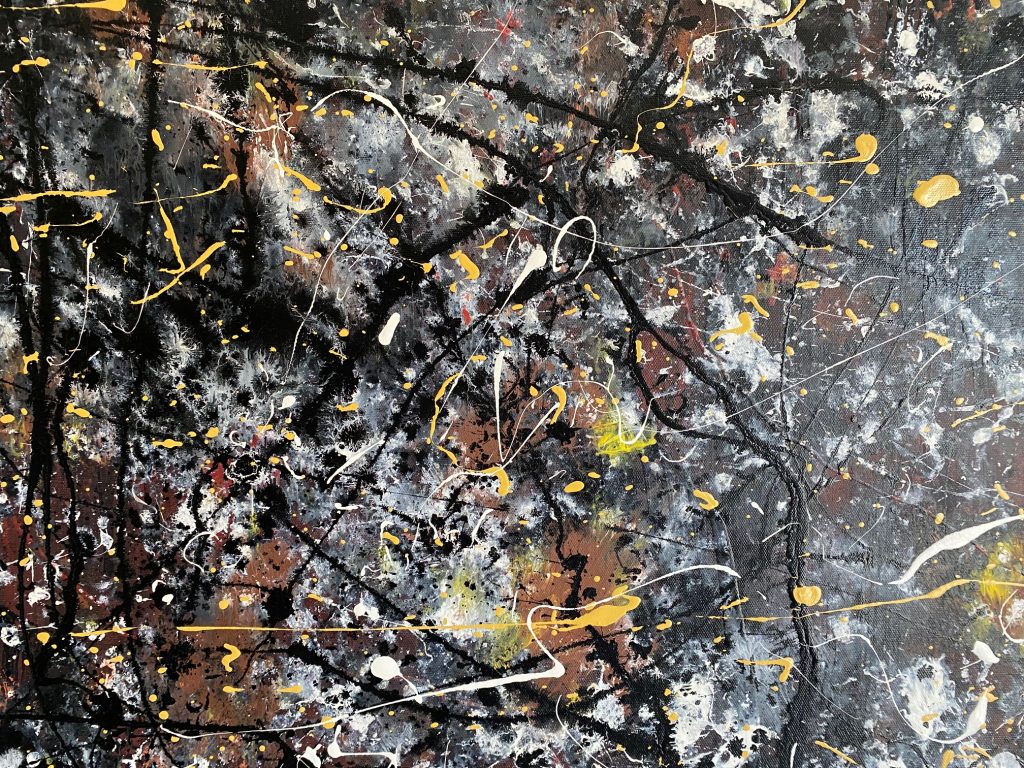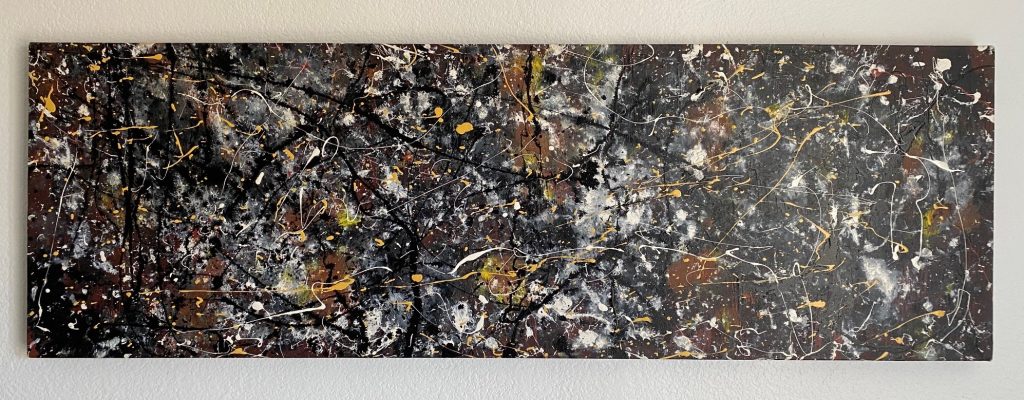Note: “Coming Home to Myself” is a collection of vignettes in seven parts. Below you’ll find Part One: Splatter. I wrote these articles as a way of coming to terms with major life transitions, with the hope that these words may inspire those of you who are finding your path and defining what it means to be your authentic self.
The work involved in achieving personal growth can be difficult and lonely, but you aren’t alone and you will get through each struggle you face. We are all works in progress, and there wouldn’t be progress without the work.
I. Splatter
I wanted to be like a splatter painting—to throw a bunch of paint at the canvas and see what stuck.
I figured I could jump in anywhere, return to the canvas later and continue where I’d left off, or start over with a new vision and direction. The colors could be undone at any moment, I told myself, erased with a solid block of black.
There would be no sense of a beginning or end with life as abstract art—only process and the ability to flow, finally, without inhibition. That’s how I conceptualized it at least.
I wanted to buy my artist friend’s splatter painting that reminded me of the cosmos with its swirling whites and yellows seemingly streaming across time and space. In fact, I pictured hanging it in a new residence on blank walls as a newly single person. I imagined it in a house with a minimalist style on the coast.
The idea was that, like the painting, I would create the cosmos I wanted to live in according to my own style and terms, which meant starting over with a fresh canvas.
The vision of that vision got modified when I decided to give my marriage another chance.
Like most people nearing the breaking point in a relationship, I had a feeling that I was delaying the inevitable. But I couldn’t shake the nagging conviction that I should try again, exhaust all options. If we had been so in love before and we still loved each other deeply, couldn’t we make it work? We decided to try.
So instead of moving into my own space, we signed a one-year lease together in February 2020 for a bungalow a few blocks from the beach in Oceanside, California, while holding onto our small home in the backcountry. I knew the coastal place—and the lifestyle it could foster—would either revitalize our marriage or become my sole residence.
We started with basic furnishings and artwork to give the place the right combination of habitable and inspiring. The main art piece we hung in the living room was the splatter painting I had been yearning for and imbuing with symbolism.
Its presence on the wall was crucial to me as a statement piece with a constant philosophical reminder to recreate my own cosmos.
We enjoyed picking out other décor together in funky places in the neighborhood like vintage shops that still gave handwritten receipts, but when the settling-in process was mostly complete, I felt my then-husband’s interest waning in the new spot. He said he liked it, but I sensed his much stronger draw to our remote abode. The backcountry was home for him, while I yearned at that time to make the coast our main home.
Weeks after hanging the splatter painting on the living room wall, I realized that while some of my thoughts about abstract art still rang true to me, I recognized how important it was for the artist to have a vision for the painting that they pretty much stuck to.
The painting couldn’t be an endless series of beginnings that fizzled because the texture would become a mess, and with no direction, there would be no completed artwork to eventually gaze upon. As the artist himself explained to me one day on the phone, changes to a piece were allowable, but it helped to have a foundation and to know when to stop.
I stared again at the painting one night while alone and thought about how I didn’t need to be like one splatter painting in progress. Why not see myself as a collection of them—both in retrospect and forthcoming?
Snapshots of our lives are better represented by finished pieces of art, I thought, rather than constant revisions that culminate once.
Life conceptualized as a gallery began to appeal much more to me than life as a single masterpiece that would only be complete upon dying. What a depressing sacrifice for your art, I thought, and life is hard enough!
As I worked to create a new home environment and find my path forward, I tried to manage the fear of ending a long relationship that had once been beautiful.
“I am writing graffiti on your body / I am drawing the story of / How hard we tried”
Ani DiFranco
Most days I felt paralyzed by the back-and-forth debate running ceaselessly in my head. I tried to tell myself that holding on too long erodes the joy and goodwill that we had lovingly built for each other over the years. Nonetheless, I felt immobilized by indecision.
At least I had a vision even if I couldn’t quite act on it yet. I could see it and feel it.
And I knew I could flow around the pain and eventually create new worlds.
Read Part 2 here.







This is honest painful Brave work. Forgiveness of self and others leads to healing…
which gives freedom and hope. Graceful stuff you are sharing with us here Carey.
In 1988, F&R and 3 kids created a Jackson Pollock style spatter paint
design on the wooden playroom floor. The kids remember the fun floor to this day.
Thank you very much! I love the image of your family creating a splatter painting on the playroom floor. How fun!